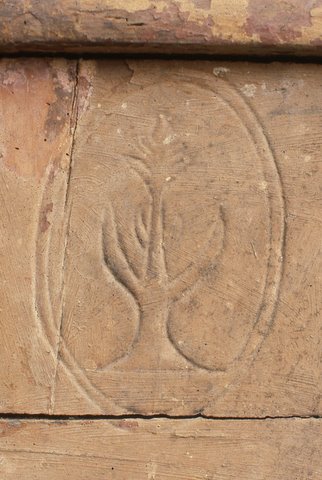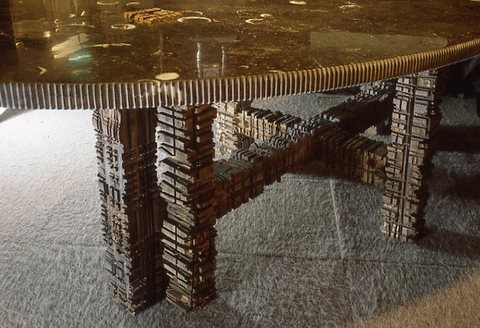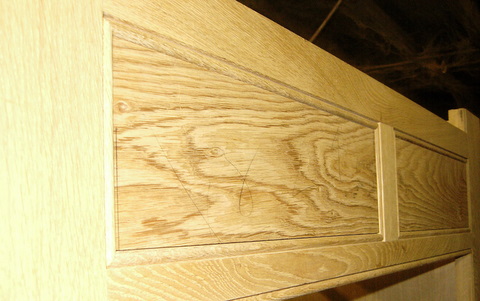I'm not sure if I have mentioned it here before, but I am to mount an exhibition in Grennan Mill, Thomastown - as an outreach Kilkenny Arts Festival event - in the summer, 5 - 14 August to be precise.
Grennan Mill, the craft school, makes itself available as exhibition space during the Kilkenny Arts Festival - (I still think of it, and prefer the title, as Arts Week) - but that's of small moment.
Last year, not only in my view but also in the opininions of the critics, the exhibitions in Thomastown excelled over the 'major' and subsidised exhibitions in the city. In Grennan Mill Lucinda Robertson's glass and Shem Caulfield's paintings and photographs of gates were superb and their work can currently be seen in the Farmleigh Gallery.
And, in one of the many empty, unsold or un-let developments that now curse our land, Bernadette Kiely had a one woman show mainly of paintings of the hills above Thomastown and Inistiogue, including Saddle Hill out upon which we look and regularly walk.
But back to my own show - literally.
I was recently contacted by Alex Meldrum, the course director at Grennan Mill Craft School, and provided with all the terms and conditions surrounding the use of my allotted space.
This immediately threw up a major disappointment.
I was informed that there will be a joint opening for the six exhibitions in the mill.
Not having been aware that this would be the case, I had already asked Martin Dwyer to open my exhibition and, although it fell right in the middle of his busy season at Le Presbytere, he had generously accepted.
Martin and Sile are not only amongst our oldest (I mean longest term) friends, but they are also one of my most loyal customers.
It was obvious to me, therefore, that Martin should do the honours for me but, as I say, I had not anticipated that that there was to be a formula for the openings.
Thinking about it, it is, of course, understandable that it should be done thus: six separate openings in the one space at the one time would create mayhem.
Martin has withdrawn most graciously but I remain very disappointed.
The immediate demands, in anticipation of the exhibitions in Grennan Mill are for a forty word biography, a forty word statement on the exhibition and an one hundred word statement by 'the artist on your work'.
It is never my intention to be so, and perhaps readers here will have decided that I am verbose but, truly, to supply the information demanded in two tranches of forty and one of a hundred words must be a challenge even to the most sparse of scribes.
Here, anyway, are my efforts and, since they are what will be used in the pre-publicity, I hope they give an enticing clue as to my intentions.
Clive Nunn - My Journey Alongside Irish Furniture - 1971-2011
Biography.
I have lived outside Thomastown since 1973 with Sue and, until they flew, our children.
In the early years I bought, sold and restored vernacular Irish furniture before - in the 1980's - focusing this experience into designing and making furniture to commission.
(41 words)
Statement on Exhibition.
The exhibition tracks my involvement with Irish furniture over the past forty years.
It will include vernacular Irish furniture, words, pictures and examples of my work over the period including items produced specifically for the exhibition.
(36 words)
Exhibitor's Statement.
With the selection of our furniture we make as strong a visual statement as we do with the choice of the clothes we wear.
Our furniture illuminates how we choose to live.
I make furniture to commission.
Whatever the furniture item, my task is to create a fusion of the three fundamental elements for a successful outcome: its purpose or function and its appearance in its position.
Whether they rationalised it or not, precisely the same disciplines applied to, and were brilliantly observed, by the makers of vernacular Irish furniture.
This exhibition is about these considerations, then and now.
(98 words)
The next demand was for 'three images from your forthcoming exhibition' and it went on to say that 'all images should be named with the title of the piece and name of artist.'
Now, since my exhibition will include the works of others and I have not yet made the items I will display 'produced specifically for the exhibition' this provided me with another dilemma.

Carved detail from an early Irish Dresser

Detail from a Kilkenny Limestone table exhibited at Showcase in the early 1990's

The lower portion of the Gentleman's Dressing Chest under construction which I made last year and became the subject of The History of a Furniture Commision
These are the images I selected in the hope that they will whet appetites.
But I am not restricted to just one hundred and eighty words here so, although I will be visiting this topic again as we get closer to the date, I will expand now a little on my thinking and intentions.
I have lived on the island of Ireland since the September of 1967.
I arrived in Belfast that autumn with the aim and purpose of opening an antiques shop, which I did though, with hindsight, it was really a junk shop, on Hope Street just off Sandy Row.
I quickly became aware of the Ulster Folk Museum at Cultra outside Belfast, which in 1967 was just three years old.
And there began my interest in the vernaular.
The UFM has grown into one of the finest Folk Museums in the world while we here in the republic have only very recently begun to address seriously our rural artefacts and heritage.
By the time I arrived in Kilkenny in 1972/3 my interest in vernacular items was established though, at that stage, I have to confess that it was largely commercial.
And this led to an extensive and enduring relationship with many Irish travellers, (tinkers, knackers, itinerants. - We, at that time, knew them as 'the tinkers') for it was they, brilliant traders that they are, who spotted that there was an urge on the part of rural people to replace their rustic furniture with modern and efficient items and that there was a reciprocal urge, by mainly urban people, to acquire them.
I was a third link in this chain.
But it was not long before I began fully to appreciate the importance of this quintessentially Irish furniture that was passing through my hands much of it, alas, bound for the USA and continental Europe.
This phase and aspect of my engagement with Irish furniture is where the exhibition will start.
And it will move through certain further phases of my involvements with it both pictorially and, I plan, with some physical items.
And it will remember that as far back as 1978 I curated an exhibition of Irish Country Furniture during the Kilkenny Arts Week of that year.
You can check the Crafts Council site on events during 'The Year of Craft' here.

